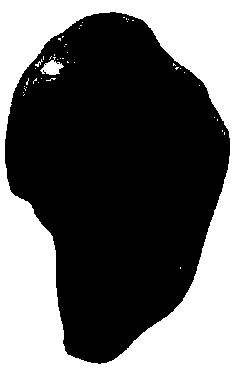Human body hip modeling and simulation method based on muscle groups
A simulation method and hip technology, which is applied in the field of human hip modeling and simulation based on muscle groups, can solve the problem that the human hip model cannot take into account the detailed human body structure and finite element simulation calculation, so as to save time , save costs, improve efficiency
- Summary
- Abstract
- Description
- Claims
- Application Information
AI Technical Summary
Problems solved by technology
Method used
Image
Examples
specific Embodiment approach 1
[0039] Specific embodiment one: a kind of muscle group-based human hip modeling and simulation method in this embodiment is specifically carried out according to the following steps:
[0040] Step 1, human hip image data acquisition;
[0041] Step 2. On the basis of human hip image data acquisition, perform geometric modeling of human hip, including hip bone (cortical bone and cancellous bone), femur (cortical bone and cancellous bone), articular cartilage, and sartorius muscle , quadriceps, biceps femoris, semitendinosus, semimembranosus, gracilis, phalanges, adductor longus, adductor brevis, adductor magnus, gluteus maximus, gluteus medius, gluteus minimus, Geometric 3D reconstruction of the entire hip;
[0042] Step 3. Based on the geometric model of the human hip, establish a muscle group model, perform model assembly on the hip bone, femur, articular cartilage, muscle group, and the entire hip, establish fat and skin models, and add tendons;
[0043] Step 4. On the basi...
specific Embodiment approach 2
[0046] Specific embodiment two: the difference between this embodiment and specific embodiment one is: the human body hip image data acquisition in the step one; the specific process is:
[0047]The image data comes from a member of the laboratory, female, 26 years old, height: 170cm, weight: 62kg, in good health, with no history of lower limb fractures or muscle injuries. CT data were collected at the 211th Hospital of the Chinese People's Liberation Army, and MRI data were collected at the First Affiliated Hospital of Harbin Medical University. CT image scanning parameters: axial continuous tomography, voltage 140.0KV, current 180mA, slice thickness 1mm, matrix 512×512, field of view FOV 18cm, a total of 700 images were collected. MRI image scanning parameters: axial scan, T2-weighted spin echo sequence, repetition time (TR) 566.7ms, echo time (TE) 10.6ms, matrix 512×512, slice thickness 3mm, field of view (FOV) 17cm, total acquisition 182 images. CT image data is mainly u...
specific Embodiment approach 3
[0049] Specific embodiment three: the difference between this embodiment and specific embodiment one or two is: in said step two, on the basis of human hip image data acquisition, carry out the geometric modeling of human hip, including hip bone (cortical bone and cancellous bone), femur (cortical bone and cancellous bone), articular cartilage, sartorius, quadriceps, biceps femoris, semitendinosus, semimembranosus, gracilis, phalanges, adductor longus , adductor brevis, adductor magnus, gluteus maximus, gluteus medius, gluteus minimus, and the geometric three-dimensional reconstruction of the entire hip; the specific process is:
[0050] The image data is used to generate 3D geometric models of bone tissue (femur and hip) and soft tissue. First, image segmentation is performed on medical images, and image segmentation is performed in three steps: threshold segmentation, region growth, and mask editing;
[0051] The separation of target tissues by selecting different gray valu...
PUM
| Property | Measurement | Unit |
|---|---|---|
| Weight | aaaaa | aaaaa |
| Elastic modulus | aaaaa | aaaaa |
| Density | aaaaa | aaaaa |
Abstract
Description
Claims
Application Information
 Login to View More
Login to View More - R&D
- Intellectual Property
- Life Sciences
- Materials
- Tech Scout
- Unparalleled Data Quality
- Higher Quality Content
- 60% Fewer Hallucinations
Browse by: Latest US Patents, China's latest patents, Technical Efficacy Thesaurus, Application Domain, Technology Topic, Popular Technical Reports.
© 2025 PatSnap. All rights reserved.Legal|Privacy policy|Modern Slavery Act Transparency Statement|Sitemap|About US| Contact US: help@patsnap.com



